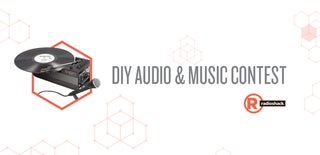Introduction: Amplified Indoor Speaker System From Scrap Parts
Introduction:
The main idea behind this is to give a life & re-use the old discarded items.
Required Materials:
1.) Old discarded Car Cassette stereo player
2.) Computer SMPS (for providing 12 Volts Power)
3.) Speakers (I have re-used the speakers from a Dead Home theater system)
4.) Cassette adapter ( Amazon Link )
5.) Wires (For connecting the Speakers & Power Card for SMPS)
6.) Misc. items such as Screw driver, Solder set, cutter etc as needed.
In Picture: My setup tucked along with X box 360 :)
PS: Wires yet to be dressed up.
Step 1: Preparing the Power Supply
CAUTION: Be aware that SMPS can have lethal Potential voltage levels.
If you are not familiar, please take help from your friends who are knowledgeable about this.
Take an ATX power Supply.
The above image has the pin out details.
Alternatively you may refer to this Wikihow link
http://www.wikihow.com/Convert-a-Computer-ATX-Power-Supply-to-a-Lab-Power-Supply
Connect a multimeter / volt meter and make sure that you are getting proper 12 volts.
WARNING: Please make sure that your SMPS is properly grounded. Else you may get noise pick up in the audio out.
Step 2: Preparing the Amplifier
Now get a car stereo Cassette player, carefully open it up.
Depending upon the manufacturer the procedure may vary.
Connect the 12 Volts Power Supply wires from the SMPS to your CAR stereo as per your model specific connections. Manual in hand may help or use google :)
Once power supply connections are done, connect the speakers too.
In my case I connected 3 speakers to:
1.) Front Left
2.)Front Right
3.) Rear Left
The un-powered Sub woofer to Rear Right (yes, you read it correct) which you can see in the photo.
Since, cassette players don't have good high frequency response, I added an extra cheap Piezo tweeters in parallel to these existing speakers.(The tiny black one on top of the speaker in the photo)
Its time to power up, and inspect and make sure that the things are in good shape.
Once powered up, insert the cassette adapter in the cassette slot, take the wire out and connect it to your mobile phone / TV / Computer or any other audio source and crank up the volume.
You should be able to enjoy your music loud.
TIPS: Some CAR Head units may make noise, which is created by the motor inside them. You may just cut/disconnect the motor as we don't need the motor to spin.
If you are lucky enough to get an aux input, that will be awesome. But my Sony head unit needs a proprietary cable which was ridiculously expensive. Hence gone with the adapter.
PS: 1.) Most of the head units will require continuous power to maintain the clock, settings etc.,
when there is a power loss, you may have to set those parameters again as per your personnel taste.
2.) Don't over load the power supply, else your audio quality will be distorted. If you see dimming lights on the head unit, its a good indication that your cranking too much or your power supply can't handle this load.
3.) Do not put too loud music for long time, you may end up with permanent hearing loss.
Step 3: Final Finish
Wonder how will be the final audio quality ?
Its difficult to describe by words, as this will vary from person to person. Any way, I'm enjoying it daily along with my TV & mobile phone.
Hence attached the frequency response of an Indian Film Music and measured using a Tuned Nexus 7 at 2 meter distance on axis response.
If time permits, will try to add white noise response too.
What did we learn in this experiment?
Learned about:
1.) Amplifier’s function, use & impact.
2.) Impact of Sub-woofer
3.) Little bit on room acoustics
4.) Little bit on psychoacoustics
5.) Most importantly, its fun of giving a 2nd life to discarded electronics & avoiding the land fill.
Thanks for reading. Feel free to put your comments.
Have fun & happy DIYing.

Participated in the
DIY Audio and Music Contest

Participated in the
Explore Science Contest













